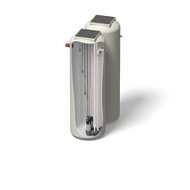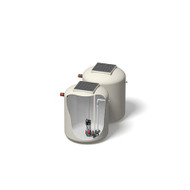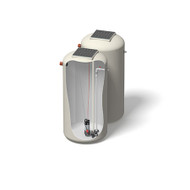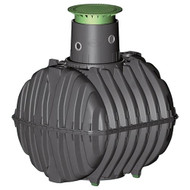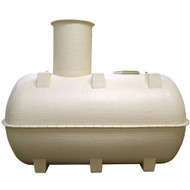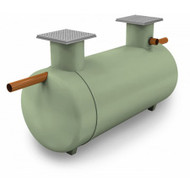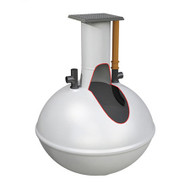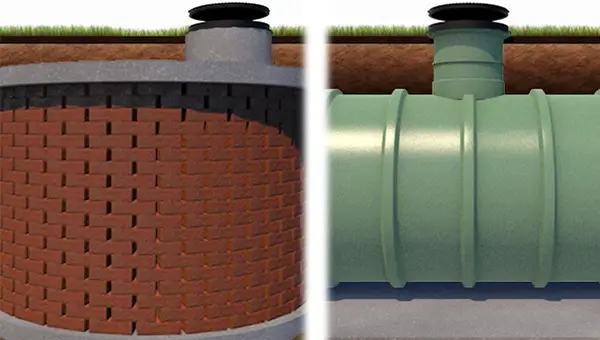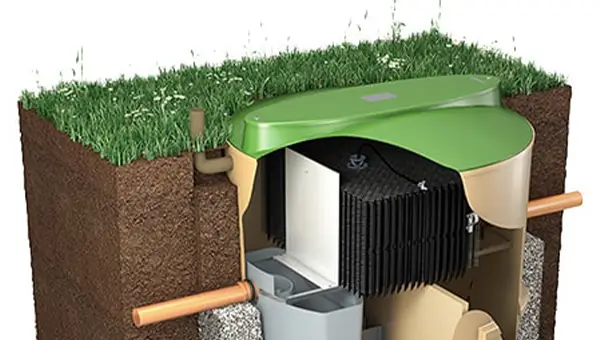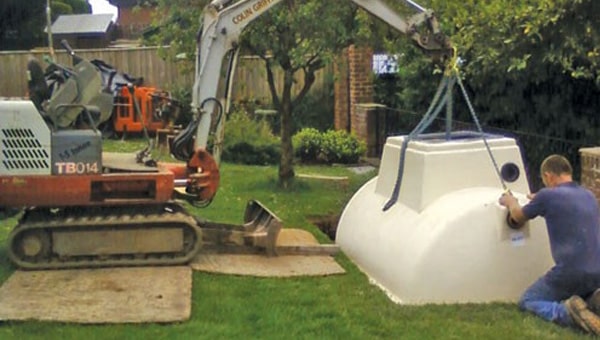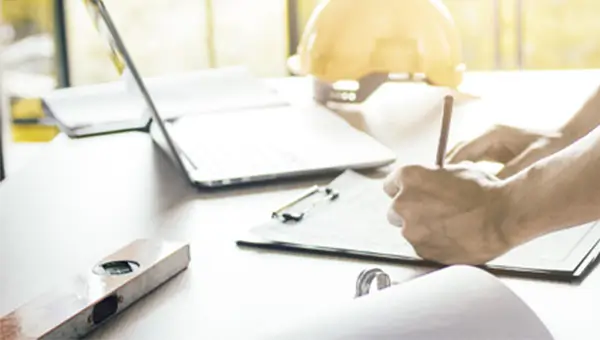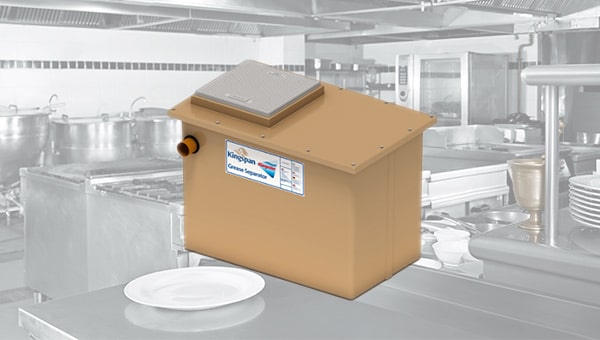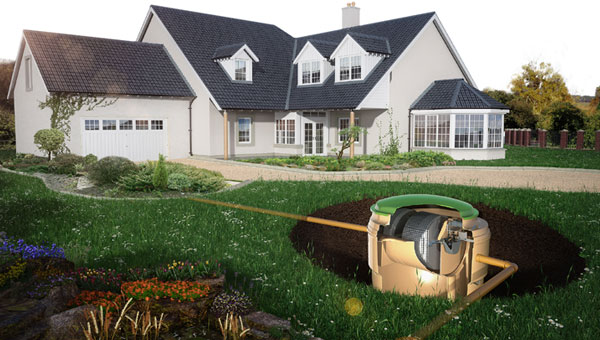
Is your home or business among the growing number of properties in the UK that aren’t connected to the main sewerage system? Wondering what options are available for the removal of waste and foul water? Then this guide to off-mains foul water drainage systems is just what you’re looking for!
For the majority of properties in the UK all waste and foul water (water from toilets, sinks, washing machines etc.) is carried away to the main sewer system via gravity and transported to a central public sewage treatment plant. However in many rural areas, and even some urban areas where wastewater treatment works are reaching capacity, connecting to the mains system can be difficult, expensive or even impossible in some cases. This is when property owners and builders need to look to off-mains solutions.
But what is off-mains drainage? What options are available, and how do you decide which is the most suitable for your property?
What is off-mains drainage?
Off-mains (or non-mains) drainage refers to drainage systems that are not connected to the main public sewerage system, and are therefore not serviced or maintained by local water authorities. They are independently owned and maintained by the owner of property. These private systems are most commonly found in rural areas where properties are simply too far away from the mains system to realistically attempt a connection.
For most of us the removal of our wastewater is something we tend to take for granted. We don't have to think twice about what happens when we flush our toilets or use our washing machines, it all just works. The waste is flushed away and is no longer our problem. However, if you aren't connected to the mains sewer system, it becomes a different story. Suddenly how your wastewater is removed from your property, and where it goes, is very much your own problem; both logistically and legally. And that leads us on to our next question.
What options are there for off-mains drainage?
If your property is within 30m of a mains sewer you will generally be expected by the Environment Agency to connect to it, regardless of the cost or difficulties in doing so. In most situations this will be the most practical and beneficial solution to the property owners anyway. For, whilst being off-mains means you may no longer have to pay sewage rates, the expense and responsibility of having to maintain an off-mains system is something most people would want to avoid if possible.
But what if your property’s drainage sits below the level of the mains sewer and can't be carried away by a gravity-fed system? What if your property is more than 30m from a mains sewer? In these situations, you have three options to consider:
Pump — Treat — Store
Can you pump it?
In low-lying areas where the main sewer system runs higher than the foul system of a property, the normal method of gravity flow can't be utilised. To transport the sewage from your property to the mains system, and avoiding the need to install a private system, you need it to defy gravity and flow uphill. To achieve this mucky miracle you need a pump chamber (a.k.a. a pumping station).
A pumping chamber/station consists of a large tank (called a wet well) designed to collect the sewage from the property and store it until it reaches a predetermined level. Once this level is reached, an internal pump is activated that pressurizes the sewage and pushes it out of the wet well, through an uphill pipe system, until it either reaches the main sewer (or a point where gravity can kick in to take it the rest of the way).
This option is really a midway point between mains and off-mains systems. You have all the benefits of your waste being taken away through a sewer system maintained by the local authority, whilst still having some of the responsibility and added cost of a private system. However, most pumping chambers are designed to keep this to minimum through the use of:
- Remote monitoring systems
- Automatic pumping (eliminating human contact)
- Wide intake pipes to minimise blockages
- High level alarms to minimise the risk of overflowing
- Maintenance plans with manufacturer/installer (highly recommended)
There are still a number of important things you need to consider when thinking about using a sewage pump chamber or pumping station:
- You will need to apply for a "New Connection" approval from your sewage provider
- The design and installation of the system will need to be done by an expert which can be costly
- The installation itself could require public road works which would involve connection fees, road closures, traffic management etc.
- If the connection has to go through 3rd party land to reach the mains sewer you will need written permission from that party which will likely require some legal involvement
- Compliance with relevant regulations will be required (BS 756-2 and Building Regulations for Foul Drainage)
- While often minimal there is still a power requirement for pumping chambers and stations that will incur an added cost over using a gravity system
- Pumps need to be sized and selected specifically for your property's needs in order to reduce the risk of fat and grease build-ups, blockages, and over or under working of the pump system (both of which can severely impact the lifespan of the pump)
These are things you need to know for sizing a pumping chamber or station:
- Overall pumping distance
- Overall pumping lift (vertical height between the outlet and the highest point in the discharge pipe)
- Proposed inlet depth
- Inlet size
- Type of property
- Number of users
- Power supply
- Storage capacity required for 24 hours of use without power
- The approximate gallon per minute (GPM) of flow into the system
Regardless of whether the thought of working all this out makes your eye twitch, or you are a DIY master and know most of it off the top of your head, it is still highly recommended to seek expert advice during your planning stage. Foul water disposal of any kind is not something you want to get wrong.
Pump Chambers
Can you treat it?
If there's absolutely no way your property can be linked to the mains system, either by gravity or pump station, then you need to install a private drainage system for your property’s waste and foul water. In this circumstance, the first thing you should ask is "can I treat it?".
You need to be aware of the environmental impact your waste could have if not disposed of correctly. You need to understand the waste and foul water requirements of your property to ensure that the system you install is capable of handling it, and you need to decide on the most suitable disposal system for your property and location.
Sewage Treatment Plants
Sometimes called package treatment plants, sewage treatment plants are the preferred off-mains waste and foul water drainage systems for both property owners and environment agencies alike. Technology has evolved from just storing sewage, as septic tanks do, to using multiple treatment chambers and nurturing bacteria growth to produce cleaner (or less polluting) effluent.
A treatment plant first separates solid and liquids then introduces oxygen, via an electrical component, to encourage aerobic bacteria growth within the plant. The bacteria breaks down the nitrates in the liquid while digesting some of the solid waste. At the end of the cycle the effluent is considered clean and safe to discharge into the environment.
Because the effluent is treated before discharge it gives you much more flexibility in where you can discharge it to.
Subject to consent to discharge through your environment agency you may be able to discharge directly into a ditch, stream or other watercourse straight from a sewage treatment plant. If this option isn't available, or permitted, then you would still benefit from needing a smaller drainage field than if installing a septic tank (approx. 20% smaller).
There are some downsides to sewage treatment plants:
- Requirement of an available electricity connection in order to supply the tank with oxygen
- Regular servicing and maintenance to monitor wear and tear of moving parts and remove built up sludge
- Higher initial cost than installing a like-for-like septic tank
- The need to switch to using bio-friendly detergents and cleaning products, as anything bleach-based can kill off the bacteria within the system
Sewage Treatment Plants
Septic Tanks
Long forming the basis of off-mains foul water drainage systems septic tanks are very simple in design, being basically just a storage tank with an outlet pipe that enables discharge into a drainage field. The tank itself doesn't really treat the waste; that happens in the drainage field where naturally occuring aerobic (waste-degrading) bacteria in the soil works to break down any discharged effluent before being soaked up into the surrounding ground.
What the septic tank does do is to utilise gravity to separate the solids from the liquids, thereby creating the effluent to be discharged, whilst storing the remaining sludge for later removal by a registered waste carrier (usually around once a year).
This makes for a fairly simple system with low running costs and low maintenance requirements. However, as we're becoming increasingly aware of our impact on the environment, the septic tank started to fall out of favour. There are now many stringent rules and regulations that apply to the installation of new septic tanks, as well as to existing ones.
- A septic tank can only service the sewage and wastewater needs of a limited number of people
- They should be installed no closer than 7m to any part of a habitable building
- Installation is not permitted in Zone 1 of a Groundwater Source Protection Zone
- They can only discharge into a soakaway/drainage field which complies with Building Regulations or BS 6297
- They can no longer discharge directly into a watercourse under new environmental legislation - for more on this view our advice on the 2020 legislation changes
Septic Tanks
For a more detailed comparison of these two treatment options check out our do I need a septic tank or sewage treatment plant related article. Read our guides to sizing drainage fields or installing drainage fields for more information about this type of discharge system.
Can you store it?
Through the planning stage of your foul water drainage system you've checked that you definitely can't connect to the mains sewer system — you can't utilise a pump station and you can't have a sewage treatment plant or septic tank — you only have one option left, you must store your waste.
Storing waste is the last part of the Pump - Treat - Store journey, and must be considered the last resort, as it carries the highest cost as well as the largest risk to the environment.
Cesspools, or cesspits, are essentially a holding tank for waste that must be emptied on a regular basis by a registered carrier. While incurring sizeable costs for property owners, effluent is not treated in any way and the tank must be substantially larger than a septic tank or sewage treatment plant, as it must store all waste collected during the scheduled emptying times.
These systems are becoming much less popular given the range of new modern options available, and new cesspool/cesspit systems are even illegal now in Scotland.
If you're not in Scotland, and this is your last option, you must still make sure:
- Comply with Building Regulations, be sure you have the space to install it - a minimum of 7 metres from a building and 2 metres from a boundary is required
- Get planning permission from your local authority and follow national environment agency guidelines
- For domestic installations: make sure it has a minimum capacity of 18,000 litres for 2 persons (plus another 6,800 litres per additional persons)
- For non-domestic installations: make sure it has a capacity for at least the minimum requirements for the application
Which option is best for you?
Off-mains drainage can be a complex issue with so many things needing to be considered, planned and accounted for. Especially when it comes to the regulations that must be complied with, which include:
- Part H1 (Building Regulations) & Part H2 (2002 Building Regulations)
- EA General Binding Rules (2015 – Self Regulation for small sewage effluent discharges)
- British Water (Flows and Loads – Part 4)
Every possible effort must be made to ensure that your private drainage system will not have a negative impact on the environment. It is the responsibility of the property owner to do this, and it is they who would face prosecution should anything go wrong in that regard.
The requirements of Part H2 2002 Building Regulations alone covers an extensive list of aspects, including:
- All wastewater treatment products
- Maintenance access
- Function in the event of power failure
- Adequate capacity (septics and cesspools)
- Siting and sizing
- Drainage field & soakaway
- Site assessment
- Percolation testing
All these elements of your private foul water drainage system must comply with the regulations for it to be considered legal. Failure to adequately plan your project around them could result in costly delays. Failure to ensure your installation is compliant could cost you a lot more.
In summary, if you don't have the option of gravity assisted connection to mains sewers, aim to pump foul and waste water. Any connection to the mains sewer will minimise the majority of these headaches and will far less hassle (and less expensive) over time.
However, some locations don't deal the luxury of choice, in which case treating foul and waste water is preferred over storing it. Regardless of which option you do go for any off-mains drainage should always be tailored to the requirements and limitations of each individual property and owner. For this reason, it's always advisable to speak to experts who can help you plan the best solution.
Here at JDP, our technical team is always on hand to offer free impartial advice for all of your drainage needs. Contact us today if you have any questions about your current or upcoming projects.




